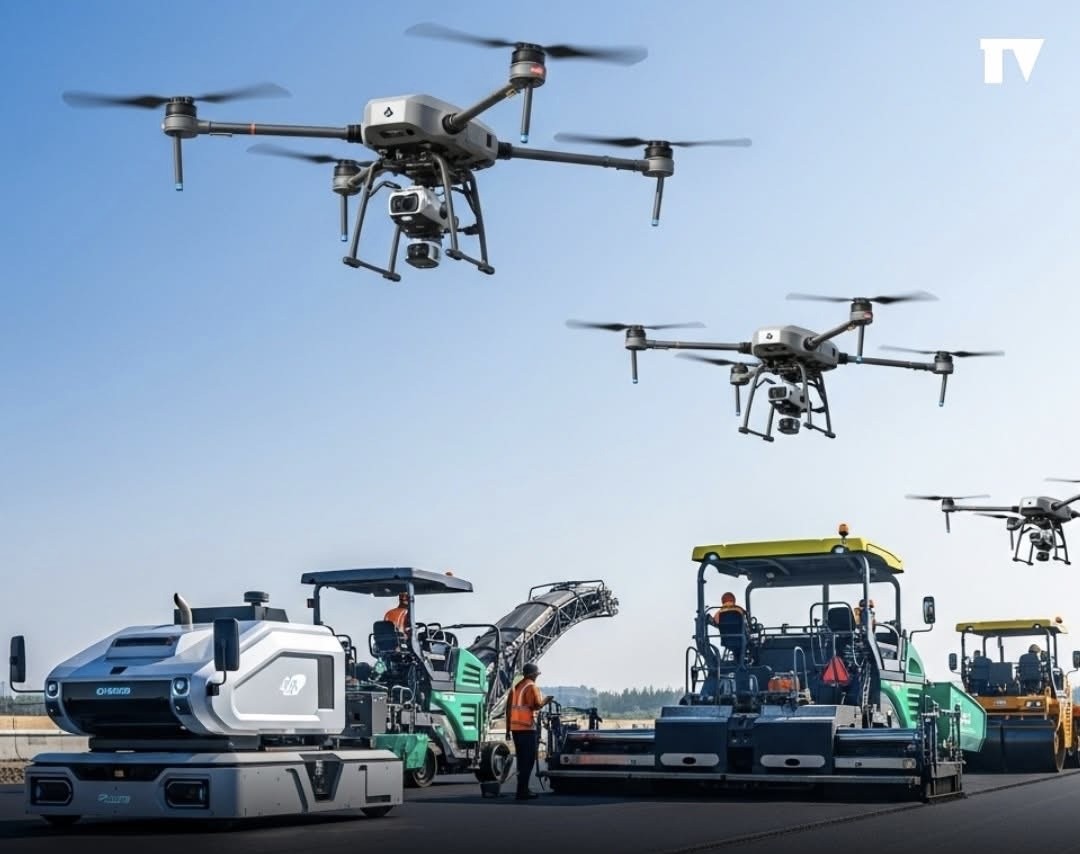In a groundbreaking milestone for autonomous infrastructure, China has completed a 158-kilometer highway entirely without human labor, using a fully automated fleet powered by artificial intelligence. The feat marks a new era in civil engineering, where AI and drones coordinate complex construction tasks from land scanning to final sealing — with n...
Drone Magazin
The DJI Mini 5 Pro is anticipated to launch in September 2025, according to multiple credible leaks. This aligns with DJI's typical product refresh cycle, as the Mini 4 Pro was released approximately two years prior. Expected Features While official specifications are yet to be confirmed, several leaks suggest the following enhancements: Sub-...
DJI is pushing the limits of autonomous drone safety with its latest firmware update for the DJI Dock 3 and Matrice 4D series. This update introduces a new accessory: a LiDAR-based Obstacle Sensing Module that helps DJI drones avoid even the thinnest hazards in flight — including wires just 12 millimeters thick. more…
British Transport Police (BTP) has launched its ground-breaking new remote 'drone in a box' capability, becoming the first police force to operationalise British Transport Police (BTP) has launched its ground-breaking new remote 'drone in a box' capability, becoming the first police force to operationalise this advanced drone technology to better keep the public safe and reduce disruption.
The DJI Mavic 4 Pro is shaping up to be the most anticipated drone of the year. While we don’t know the full specs yet, DJI dropped a teaser this week that has the drone community buzzing. While the company hasn’t confirmed it outright, the imagery and tagline — “Spin Your World”— accompanied by a […] The post DJI Mavic 4 Pro: 6 features I want to see in DJI’s new drone appeared first on The Drone Girl.
Learn essential drone pre flight checklist tips to ensure safety and compliance. Prevent accidents and fly confidently with our expert guidance.
The Welsh Ambulance Service is to begin using remotely operated drones to survey the scenes of hazardous and challenging incidents.
Windracers, pioneering provider of the low-cost self-flying cargo aircraft ULTRA™, announced today that it has contracted
SiFly to build drones designed like to perform like mini-helicopters By DRONELIFE Features Editor Jim Magill Many businesses have been slow to embrace unmanned aviation because what they really want is a vehicle with the flight endurance of a helicopter at the price of a drone, Logan Jones, chief business officer of drone start-up company […] The post From Drone to Helicopter: SiFly Redefines UAV Design for Endurance and Value appeared first on DRONELIFE.
DJI has officially teased the Mavic 4 Pro, marking a historic moment as the company reveals the actual drone in a teaser for the first time, likely due to the numerous leaks that have circulated in recent months. Shared via the DJI X account, the announcement features a short clip showcasing the gimbal’s ability to […]
A Czech technology company Dronetag specializing in global drone identification solutions is raising serious concerns
DJI has officially teased a new drone featuring a spinning triple-camera system, with a launch scheduled for May 13 at 12 p.m. GMT. This announcement has fueled speculation about the upcoming DJI Mavic 4 Pro, and recent leaks provide insights into its anticipated features. more…
Many countries are now transitioning from limited testing to formal application of ag spray drones, says global market leader DJI.
If you’ve ever looked at your drone footage and thought, “Why doesn’t this look like what I see on Instagram?” (and yes, that’s me too), then there’s something good out there for you. — this course is for you. UAV Coach today launched a new online course called Aerial Photo & Video for Drone Pilots. […] The post UAV Coach launches Aerial Photo & Video for Drone Pilots — here’s why you’ll want in appeared first on The Drone Girl.
Piasecki Aircraft Corporation, a pioneer in vertical flight, announced today the acquisition of Kaman Air Vehicles’ KARGO UAV™ program, expanding its portfolio of vertical lift and cargo UAS solutions. KARGO UAV is a medium-lift, autonomous unmanned aerial vehicle that has been demonstrated to both the U.S. Marine Corps and U.S. Army for its cargo VTOL […]
Kansas City is on the verge of a logistics revolution as Amazon eyes the metro for its Prime Air drone delivery service, according to an exclusive report by The Kansas City Star. The retail giant, founded by Jeff Bezos, has secured permitting approval from the City Plan Commission and the Board of Zoning Adjustment to […]
“My drone’s battery is half-empty and I didn’t even fly it!” If that sounds familiar, don’t worry — it’s not a defect. It’s actually your DJI drone battery doing something very smart. Let’s dive into why this happens, and explore how DJI batteries protect themselves when your drone is just sitting on the shelf. more…
Master drone insurance costs with insider strategies. Compare premium options and discover proven ways to save on both hobby and commercial UAV coverage.
Kongsberg Geospatial is celebrating the expansion of its Kanata offices with a ribbon-cutting ceremony on
Sign up for Hubs’s newsletters.
Become a Member.
DIGITAL
$1.50/mo
- Unlimited Access to Hubs
- iOS & Android app
- Exclusive live events
- Digital issues, audio articles, & more
- Digital subscription
- 10 print issues of the magazine delivered to your door
PRINT & DIGITAL
$1.75/mo
- Unlimited Access to Hubs
- iOS & Android app
- Exclusive live events
- Digital issues, audio articles, & more
- Digital subscription
- 10 print issues of the magazine delivered to your door


















